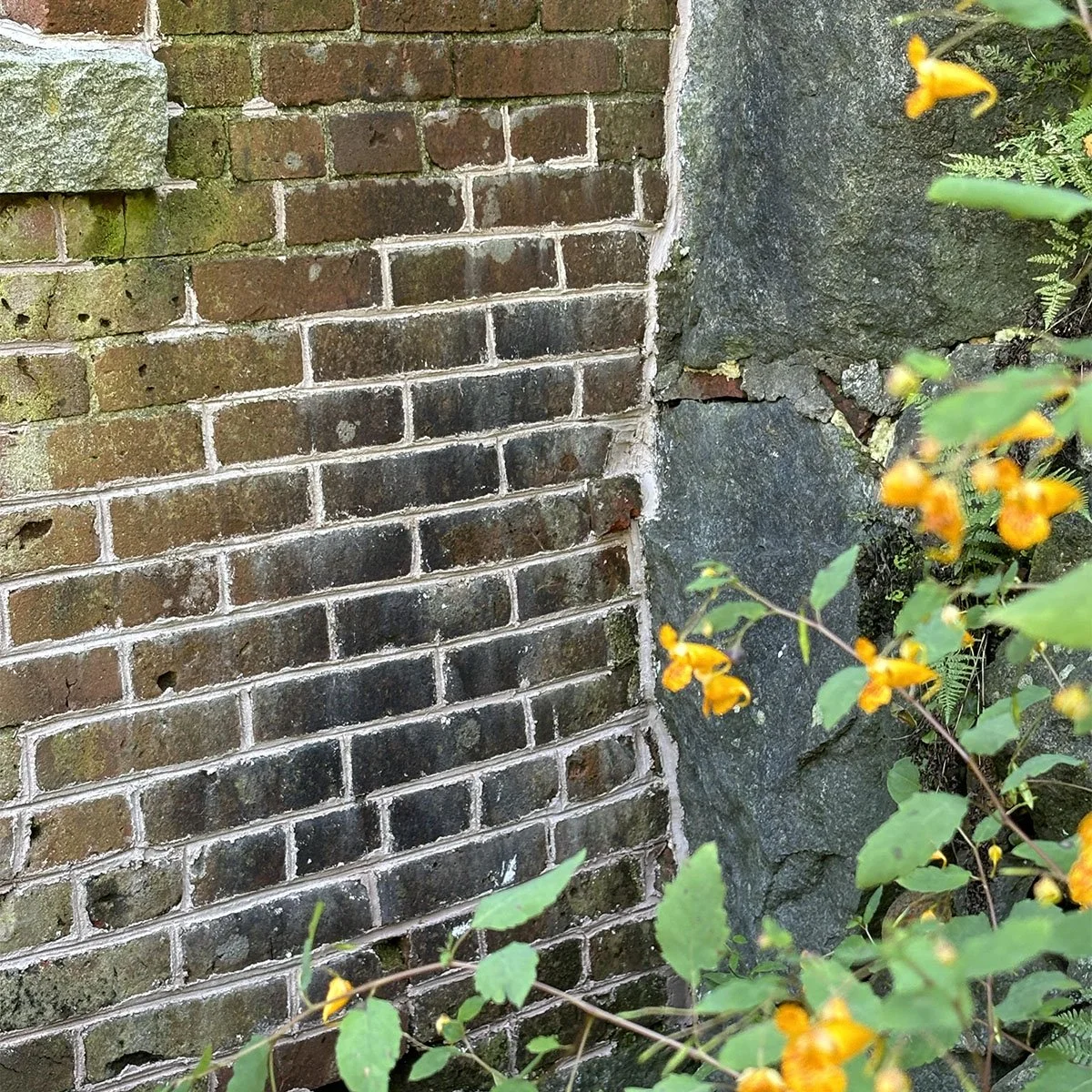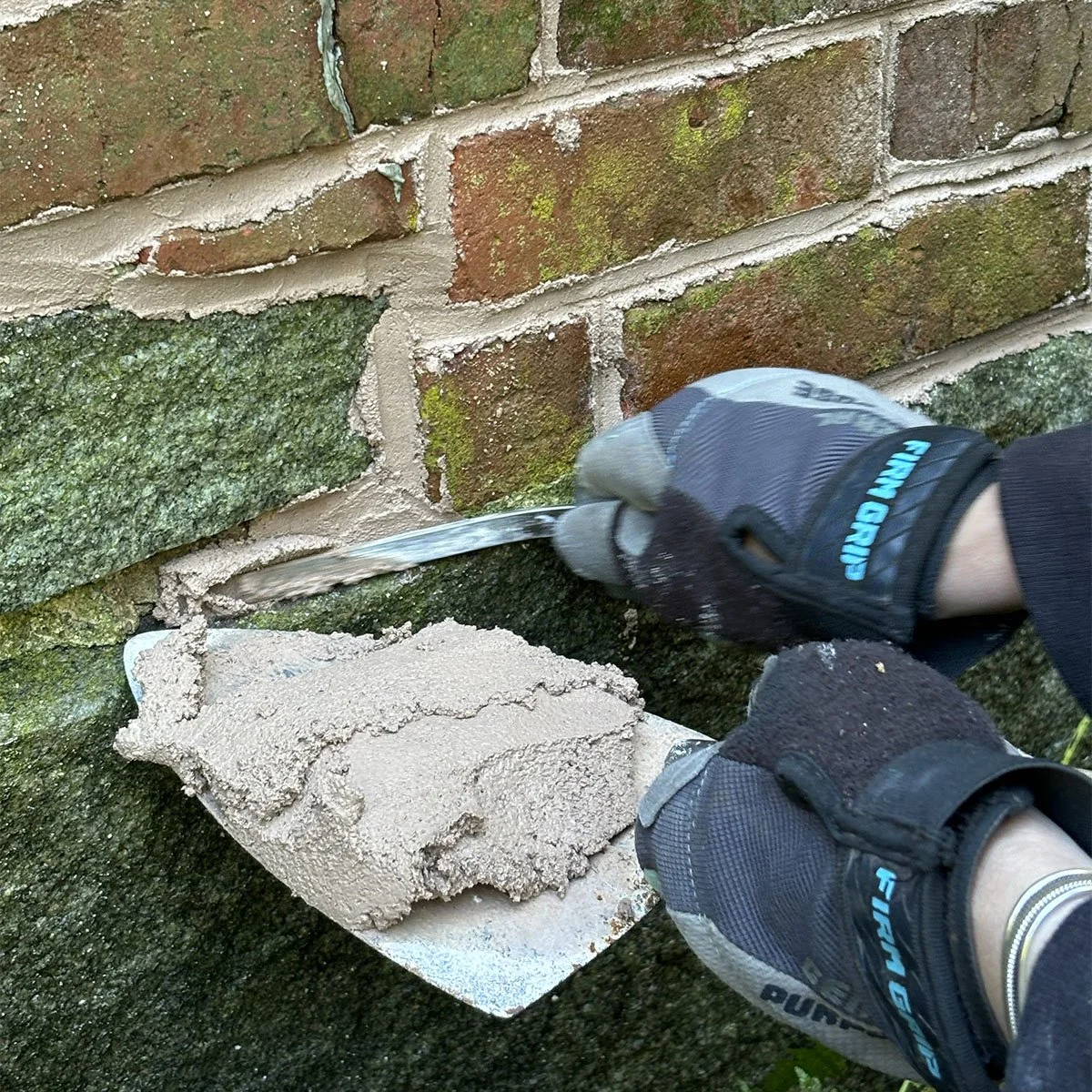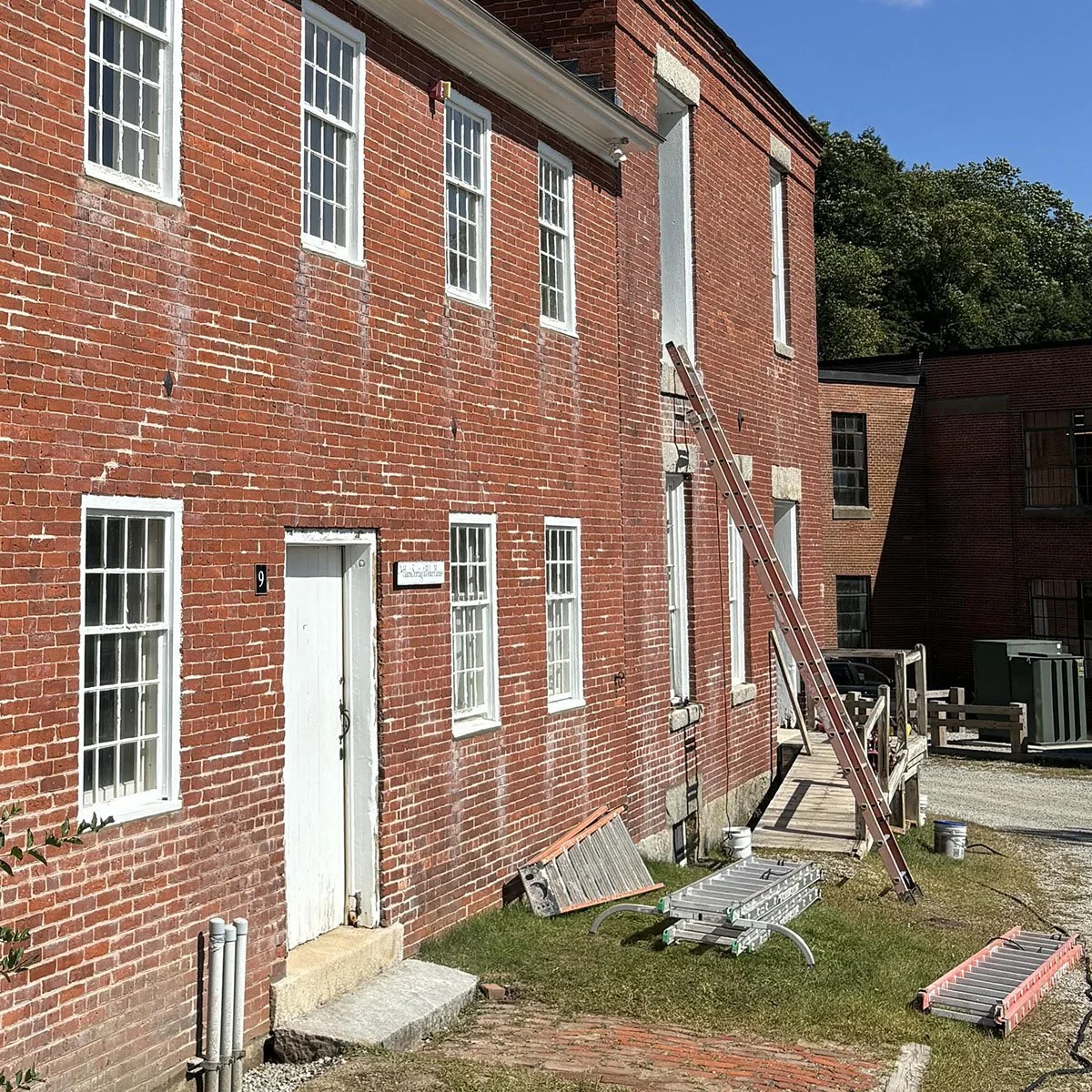Thick as a Brick: Harrisville’s Historic Bricks
Repointing the Harris Boarding House
If you have been wandering around the village recently, you may have heard the tink, tink, tink sound of brick wall repairs being made to the Harris Boarding House, Sorting and Picker building, and the Boiler House. These three buildings on Mill Alley, which serve as residential and commercial rentals for Historic Harrisville, are currently being repointed by HHI’s own preservation experts, Fred O’Connor and Kat O’Brien.
Bricks have been used as a building material stretching back to 7,000 B.C. Early examples of brick excavated in Turkey were composed of clay and straw left to dry in the sun. The first brick building to appear in Harrisville was built by Bethuel & Deborah Harris in 1819, using a brick laying method referred to as the Flemish Bond which alternates stretchers (the sides of brick) and headers (the end of the brick). The earliest examples of Flemish Bond style of brick laying can be found in Northern and Central Europe from the late medieval period. Bricks used in the construction of homes and businesses in the village were sourced locally from Harrisville and the neighboring communities of Nelson and Keene.
Brick buildings need tender loving care. Temperature fluctuations and harsh weather cause deterioration to bricks and mortar over time. In the early 20th century, masons would often use portland cement and ground limestone or hydrated lime to repoint buildings believing, erroneously, that the fast-drying, hard cement qualities would last longer. The hardened mortar would often crack and did not allow the building to “breathe.” In contrast, the age-old mortar recipe of sand, lime, and water allows the transfer of vapor or wicking, and if used properly it can last for 100 years or more. According to This Old House, this traditional recipe was established in 10 B.C. by the great Roman military engineer Vitruvius, was used to build the Egyptian pyramids, and is “the best mortar ever developed.”
Fred and Kat know that the right repointing technique ensures their work will last and recently used this traditional, time-tested method during their restoration of the Harris Boarding House and the Sorting and Picker building. The team used recycled bricks from buildings long gone for the necessary repairs. Crumbling bricks or bricks with holes were refaced or replaced entirely. Kat researched and tested mortar color to match each building. Each missing section of mortar was replaced using proper period methods and tools. Not an easy feat two to three stories up on a ladder in 80-degree heat with angry hornets dive bombing you!
Repointing detail
Repointing detail
Repointing the Sorting & Picker building




